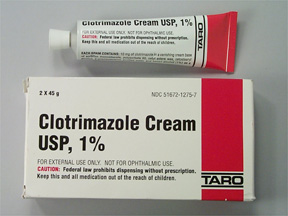
Athletes Foot (clotrimazole) Coupons & Savings Card – Discount Prices from $5.58
Brand for: Clotrimazole
Clotrimazole is used to treat skin infections such as athlete's foot, jock itch, ringworm, and other fungal skin infections (candidiasis). This medication is also used to treat a skin condition known as pityriasis (tinea versicolor), a fungal infection that causes a lightening or darkening of the skin of the neck, chest, arms, or legs. Clotrimazole is an azole antifungal that works by preventing the growth of fungus.
My prescription
Edit
14.2GM of 1%, Clotrimazole (1 Tube)
Select pharmacy

CVS
$19.29
COUPON PRICE
Walmart
$5.58
COUPON PRICE
Albertsons
$7.50
COUPON PRICE
Walgreens
$10.36
COUPON PRICEFree Athletes Foot (clotrimazole) Savings Card

Walmart
$5.58
Show this coupon to your pharmacist
ID
LHD17981F9
PCN
CHIPPO
BIN
019876
GRP
LHX
This coupon is not insurance
Brand for: Clotrimazole
Clotrimazole is used to treat skin infections such as athlete's foot, jock itch, ringworm, and other fungal skin infections (candidiasis). This medication is also used to treat a skin condition known as pityriasis (tinea versicolor), a fungal infection that causes a lightening or darkening of the skin of the neck, chest, arms, or legs. Clotrimazole is an azole antifungal that works by preventing the growth of fungus.
Our Athletes Foot (clotrimazole) coupons are free to use. You can print the coupon, email it to yourself, or receive the Athletes Foot (clotrimazole) coupon via text message. To get your free discount, show the pharmacist your Athletes Foot (clotrimazole) savings card which has the discounted coupon price. Use our filters below to edit the prescription box to match your needs. The Athletes Foot (clotrimazole) prices will update based on your prescription needs. Above our Athletes Foot (clotrimazole) coupons, you can change the location to see pharmacy prices in other areas. Our prescription discount card will update online with the specific pharmacy costs associated with your edits. Be sure to text, email, or print the Athletes Foot (clotrimazole) savings card code that you need after editing the prescription box and location field. Show the discount card to your pharmacist before paying.
Our Athletes Foot (clotrimazole) coupons are free to use. You can print the coupon, email it to yourself, or receive the Athletes Foot (clotrimazole) coupon via text message. To get your free discount, show the pharmacist your Athletes Foot (clotrimazole) savings card which has the discounted coupon price. Use our filters below to edit the prescription box to match your needs. The Athletes Foot (clotrimazole) prices will update based on your prescription needs. Above our Athletes Foot (clotrimazole) coupons, you can change the location to see pharmacy prices in other areas. Our prescription discount card will update online with the specific pharmacy costs associated with your edits. Be sure to text, email, or print the Athletes Foot (clotrimazole) savings card code that you need after editing the prescription box and location field. Show the discount card to your pharmacist before paying.
Athletes Foot (clotrimazole) FAQs
Using the SaveHealth discount card, what is the price of Athletes Foot (clotrimazole) without insurance?
Using the SaveHealth discount card, the price of Athletes Foot (clotrimazole) without insurance is $5.58.
What is the price of Athletes Foot (clotrimazole) at CVS?
The price of Athletes Foot (clotrimazole) at CVS is $19.29.
What is the price of Athletes Foot (clotrimazole) at Walgreens?
The price of Athletes Foot (clotrimazole) at Walgreens is $10.36.
What is the price of Athletes Foot (clotrimazole) at Walmart?
The price of Athletes Foot (clotrimazole) at Walmart is $5.58.
